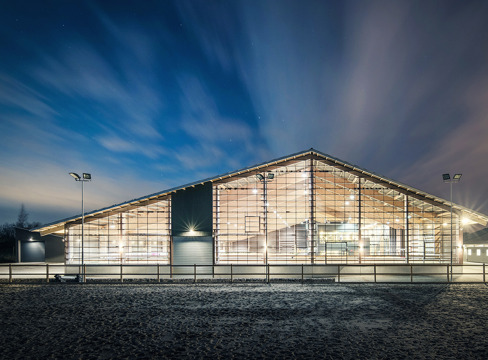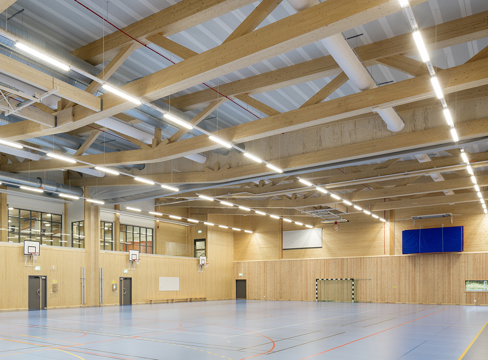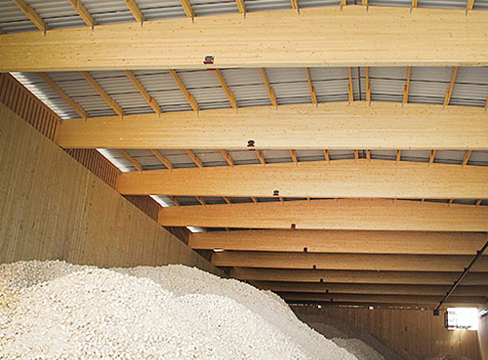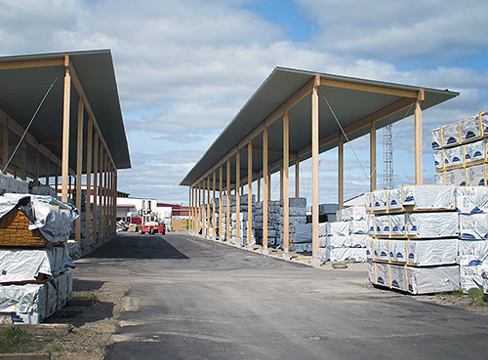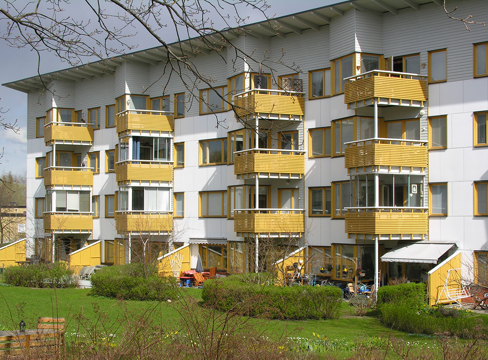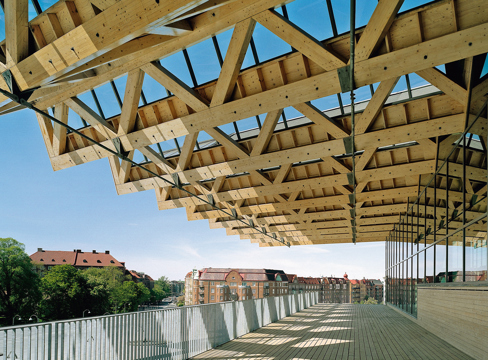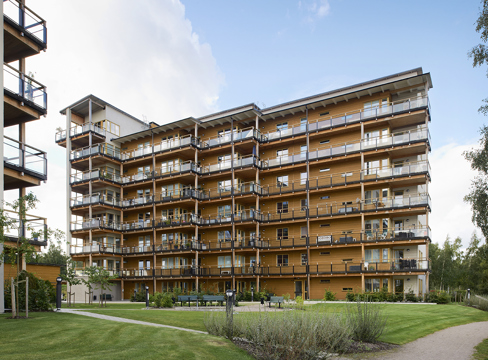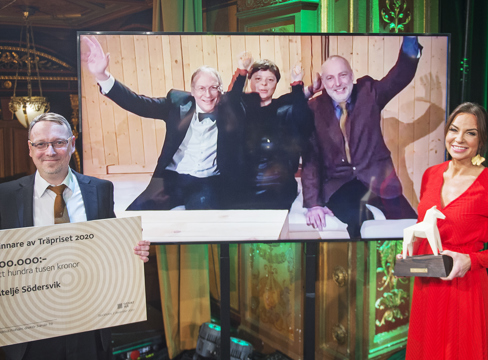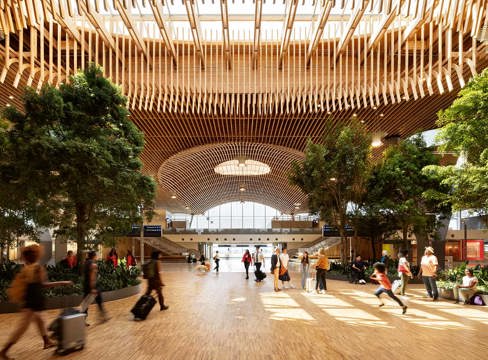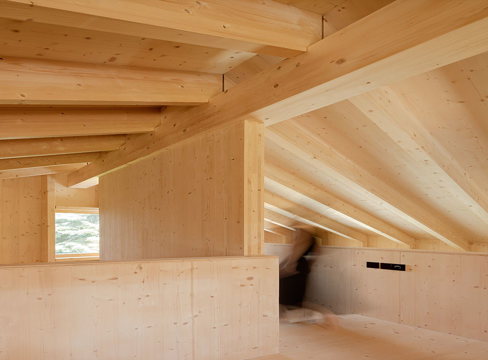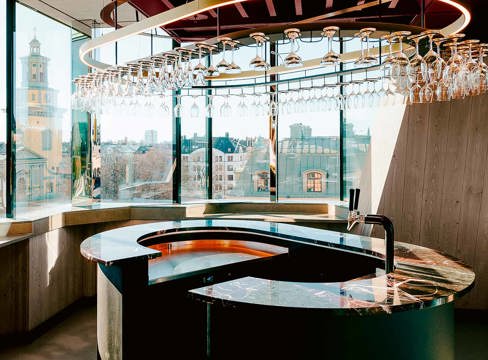Digital transformation is high on many a strategic agenda, and the wood industry is no exception, having already made good progress on its digital journey, with support from the industry organisation Swedish Wood. Much of the focus is on creating solutions that effectively help and improve the member companies’ businesses, as well as on developing their knowledge and producing tools that benefit the entire construction sector.
Swedish Wood has been working with its members, and other links in the value chain, for quite some time now to digitalise and standardise information on their wood products – as part of a bigger picture, with advances actively being pursued together with parties in the Swedish and European urban development sector. This work is paving the way for standardised and digital solutions that can be used both in Sweden and internationally.
“The benefits are clear – if everyone describes their products in the same way, the job becomes easier and the results of calculations more precise,” says Christer Green, who is project managing the digitalisation work at Swedish Wood.
One example is VilmaBas, which Swedish Wood developed in partnership with the Association of Swedish Building Materials Merchants. It is an industry-wide database that describes a range of the most common standard products in wood, based on specific properties. The database was launched in 2011 and now contains around 580 wood products. It has also been synchronised with the global standardisation organisation GS1 and their system for goods and information flows.
“VilmaBas has laid the groundwork for us to join up the whole process chain, from project planning to finished building. The experience gained from the work on VilmaBas and other projects has given us a slight head start, which means that the wood industry is now leading the way on meeting new demands and expectations,” says Christer Green, who was previously the project manager for VilmaBas.
The new demands and expectations to which Christer Green is referring relate largely to how new digital tools and efficient processes can reduce the construction sector’s climate footprint. Statistics from Boverket show that around two thirds of the construction sector’s emissions occur during new construction, renovations and refurbishments, with the production of building materials generating around 85% of the emissions during the construction process itself.
Life cycle analysis as basis for procurement
The Cederhusen wood construction project has a long history. It was initiated by Folkhem back in 2010 and then it took six years to obtain land allocations for the Bologna and Humboldt sites in Hagastaden. It was clear from the start that the project is a strategic environmental and sustainability endeavour, with the choice of wood marking a distinct stance on the question of climate change.
The four apartment blocks, which are between seven and 13 storeys high, are currently being built over the top of the tunnels for the E4 and E20 motorways and the Värtabanan rail line, which creates considerable complexity regarding loads and foundations. The light weight of the wooden buildings means that full use can be made of the permitted development rights and the original concept behind the detailed development plan can be completed.
While the engineering consultants at Bjerking planned the wooden carcases for Cederhusen, a project was also launched together with the property developer Folkhem. The purpose of the project was to produce a life cycle analysis for the wooden carcases, but also to find tools to link the digital 3D model of the building with a climate calculator, making it possible to obtain climate data from the project on an ongoing basis. It turned out that simply by comparing climate data for the same product from four different suppliers, carbon emissions from factory to construction site could be cut by around 50% or a little over 500 tonnes. The life cycle analysis also provided a means by which to compare suppliers.
“Ultimately, the question is how we should incorporate climate calculations into our projects. We need to set a carbon budget at the start of the project that can be monitored in a qualitative way. But also, together with our consultants, we need to incorporate climate considerations into our decision-making processes. And for this we have to have a digital 3D model that everyone understands and can draw data from,” explains Anna Ervast Öberg, head of business and project development at Folkhem.
Collaborative group’s approach is to maintain an inventory of the whole project
The development project has brought together a team with wide-ranging expertise, including representatives from Swedish Wood, Bjerking, Folkhem, Nordr, Veidekke Entreprenad and the main material suppliers for Cederhusen. Using a current, real-life project, the aim is to make serious advances in the development of quality assured and active climate work through every phase of a construction project.
“Our work is driven by sustainability issues that are complex and involve a great deal of intangible information. We now want to create a unified language that allows all the information about a product to simply and conveniently remain available all the way through the project,” says Robert af Wetterstedt, sustainability specialist at Bjerking.
The intention is for the work of the group to lead to the collection of even more information about the products and processes involved in a construction project. This in turn will improve productivity and the efficiency of producing a building, but most importantly the initiative will pave the way for concrete tools and knowledge that will reduce the climate footprint of projects. Different structural solutions, material choices and even suppliers generate varying levels of carbon emissions, and it needs to be possible to calculate and visualise these differences directly in the client’s and the designer’s digital 3D model of the building.
Anna Ervast Öberg stresses the importance of finding systems and methods that prepare the construction industry for the imminent legal requirement that buildings must come with a climate declaration. This will enter into force on 1 January 2022 and makes it the responsibility of the developer to draw up and submit a climate declaration to Boverket once the building has been completed.
“The collaborative group’s approach is to maintain an inventory of the whole project. What requirements have been set, how are the transport and handovers being organised, and what software and procedures are being used by the parties involved? We have historically worked in multiple layers, adding new requirements, new systems and new materials to resolve a basic problem. What we are doing now is looking at the bigger picture and peeling away those layers to get back to the core issue.”
Sustainability requirements should be seen as positive and essential
Robert af Wetterstedt at Bjerking has also initiated a project aimed at creating a framework for systematic management of requirements throughout the construction process. The goal is to develop a prototype template for the digital exchange of information concerning sustainability requirements and compliance declarations.
“We want the template to allow for cloud services that enable sustainability requirements and compliance declarations to be managed the way Spotify manages music. If all goes well, the template will make it easy to work with and monitor sustainability requirements and any other requirements within a construction project. By creating a systematic digital solution, we will elevate digital requirement management to something positive, important and profitable.”
As it stands, the participants in the project reference group are able to enter their own requirements in a prototype of the requirement data template developed by the project. The next step is to canvas opinion on the design and ease of use. Swedish Wood will then adapt the template to its industry, so that members can add their products digitally into the Svenskt Träs Produktkatalog database, where the information can easily be retrieved.
“Swedish Wood’s members have realised that they are unable to tackle all the issues surrounding the digitalisation process on their own. It is therefore important for the construction industry to work together and Cederhusen is the perfect place to start, as it is a highly interesting real-time project with many suppliers,” says Johan Fröbel, Head of Technology and Distribution at Swedish Wood.
Together we are helping the industry to improve
As project manager for Veidekke Entreprenad, Jakob Tengvald is on site in Hagastaden, where rapid progress is being made on the Cederhusen development. He is a member of the collaborative group and thinks their work has led to a more structured way of gathering data. Now all Cederhusen’s inspections and checks are done digitally, which has made it easier to deal with discrepancies.
“The main benefit over the slightly longer term is that we will have the information in one place so that we can analyse and learn from it afterwards. Usually a lot gets written down on paper and in my experience information often gets lost when it is dealt with by email and phone.”
Veidekke’s role in the collaborative project is to coordinate all the suppliers associated with the production phase and make them aware of how information about materials flows through the process. The starting point has been the main climate-related parts of the project, where it has been possible to influence the outcome.
“Everyone is clearly pulling in the same direction and eager to bring about change. Instead of working in small silos, we talk openly to each other and share our knowledge and experience in order to help improve the industry. Being able to identify a challenge and actually develop concrete solutions is really rewarding.”
The construction industry is at an exciting juncture, in Jakob’s view, and he is positive about sustainability becoming a competitive force to be reckoned.
“My hope is that Cederhusen will serve as a springboard and eye-opener to others who want to explore alternative solutions. In a few years’ time, I hope what we’re doing today will have made a difference and simplified the production of accurate climate data to support decision-making early in our processes.”





